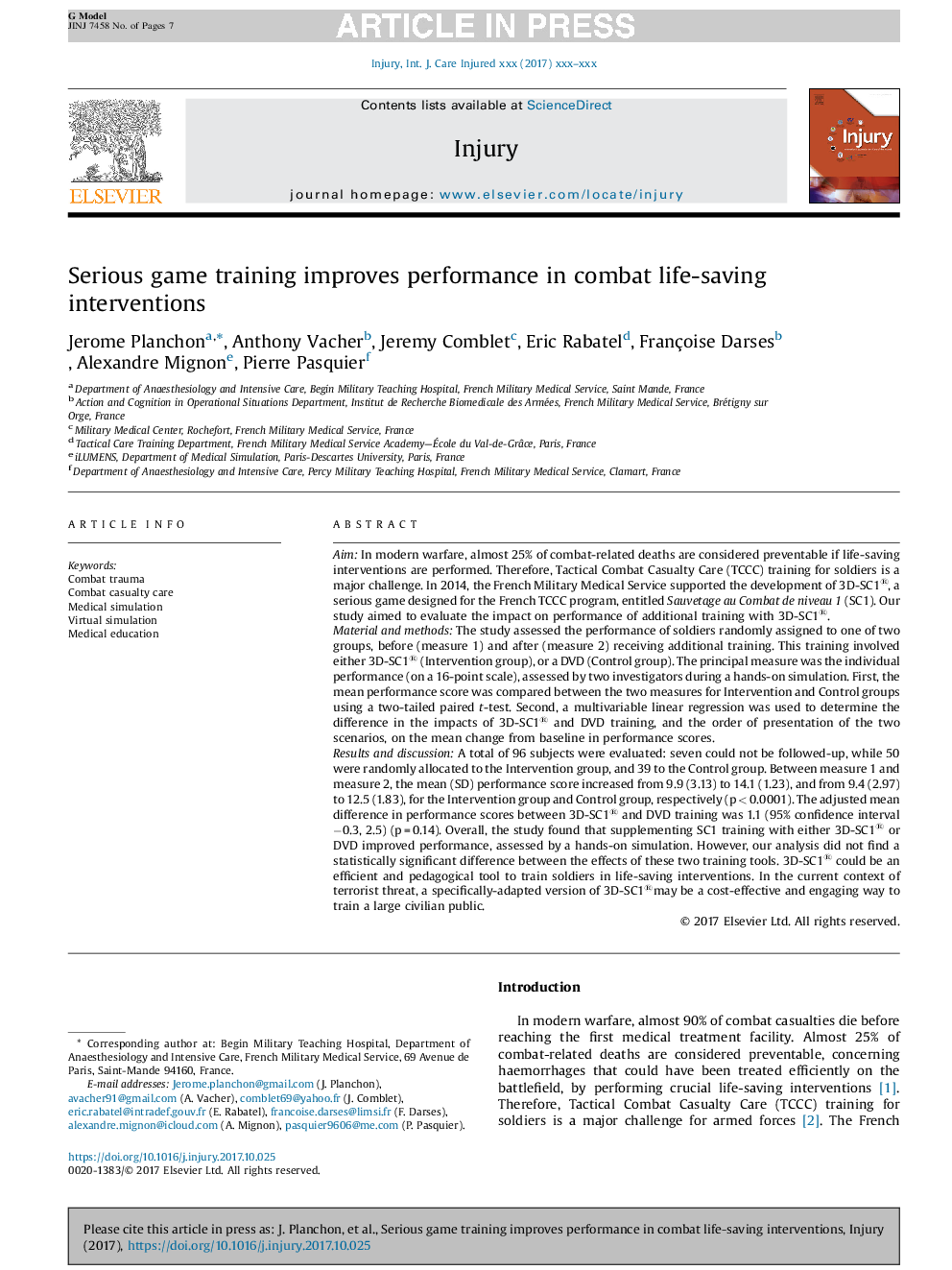| Article ID | Journal | Published Year | Pages | File Type |
|---|---|---|---|---|
| 8718879 | Injury | 2018 | 7 Pages |
Abstract
A total of 96 subjects were evaluated: seven could not be followed-up, while 50 were randomly allocated to the Intervention group, and 39 to the Control group. Between measure 1 and measure 2, the mean (SD) performance score increased from 9.9 (3.13) to 14.1 (1.23), and from 9.4 (2.97) to 12.5 (1.83), for the Intervention group and Control group, respectively (p < 0.0001). The adjusted mean difference in performance scores between 3D-SC1® and DVD training was 1.1 (95% confidence interval â0.3, 2.5) (p = 0.14). Overall, the study found that supplementing SC1 training with either 3D-SC1® or DVD improved performance, assessed by a hands-on simulation. However, our analysis did not find a statistically significant difference between the effects of these two training tools. 3D-SC1® could be an efficient and pedagogical tool to train soldiers in life-saving interventions. In the current context of terrorist threat, a specifically-adapted version of 3D-SC1®may be a cost-effective and engaging way to train a large civilian public.
Related Topics
Health Sciences
Medicine and Dentistry
Emergency Medicine
Authors
Jerome Planchon, Anthony Vacher, Jeremy Comblet, Eric Rabatel, Françoise Darses, Alexandre Mignon, Pierre Pasquier,
